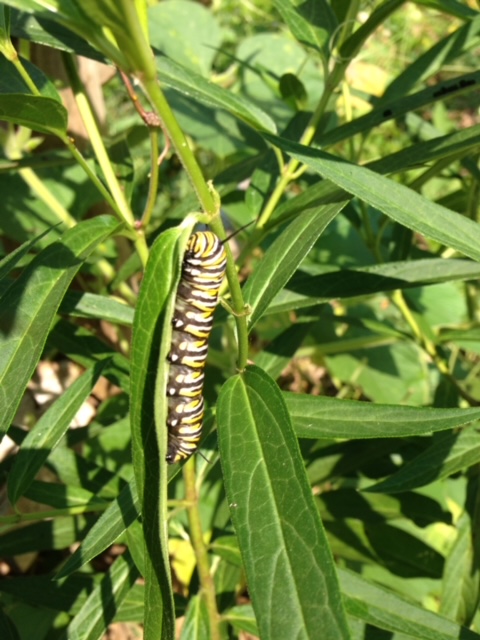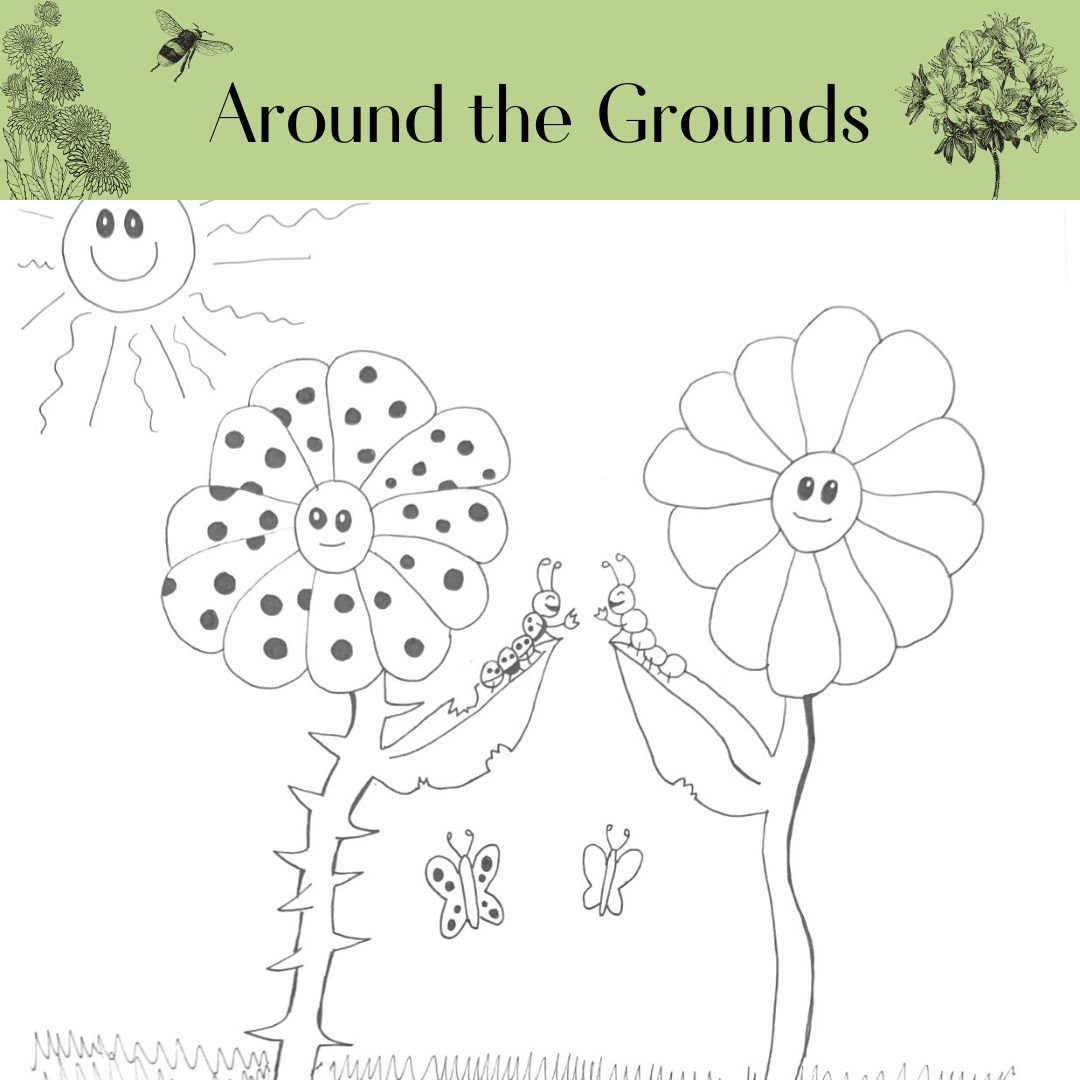Many of us grown-ups, upon learning of the complex relationships between native plants and insects, wonder “why am I hearing about this for the first time?” or “did I miss this in school?” No worries! You are not alone. This subject only recently has become part of the basic biology curriculum.
At the Greenburgh Nature Center, we want people of all ages to understand this vital relationship. So, let’s start at the beginning — with some visual aids!
“Native” plants are the species that evolved in a particular place without human intervention. In the US, that means the trees, shrubs, grasses, and perennials that were here before European settlers arrived. Native plants are important largely because of their relationship with native insects.
The majority of insects eat plants. Most other animals, including humans, also eat plants, or they eat other animals that eat plants. As the main food supply for most living things, plants would soon be wiped off the face of the Earth if they did not develop strategies to protect themselves from all of these plant-eaters!

Illustration: Masha Role
Over the millennia, plants evolved defenses to protect themselves from plant eaters. You may recognize a few of these if you’ve eaten a very hot chili pepper or had a bad reaction to touching poison ivy. Insects (the largest category of plant eaters) face similar problems.

Illustration: Masha Role

Illustration: Masha Role
To survive, insects had to evolve methods of overcoming plant defenses. But the enormous variety and complexity of defenses in the plant world limited insects to overcoming only the specific defenses of a limited number of plant families. As a result, about 90% of all plant-eating insects are “specialists,” meaning they are able to eat only a few closely-related species of plants. Those plants became the “host” plants for the insect species adapted to overcoming their specific defenses.

Illustration: Masha Role
The best-known example of this insect/host relationship is the monarch butterfly and milkweed. Milkweed has sticky sap loaded with toxins that repel most insects. The monarch caterpillar evolved the ability to tolerate those toxins, but has no ability to overcome the defenses of other plants. Monarch caterpillars cannot eat the leaves of plants outside of the milkweed family.


The situation is the same for most plant-eating insects. These evolutionary plant/insect relationships developed over very long stretches of time, thousands of years. So, most insects can eat only those plants that evolved with them in the same place and over the same long period of time. That is why insects native to North America cannot eat plants that have been brought in, or “introduced,” by human settlers from other continents.
As you look around your neighborhood, you will no doubt see many plants introduced from other continents: Norway maples, Korean dogwoods, Japanese maples, Norway spruces, Japanese barberry, English ivy, Chinese feather grass, and many more. These non-native plants have evolutionary relationships with insects on other continents, but most North American insects cannot eat them. Many of these plants are marketed as “pest-free” for exactly that reason. Insects here avoid them, and many gardeners like that!
But “pest-free” plants come at a terrible cost: nearly all (96%) of our native terrestrial birds need insects to feed their young. Well-documented and shocking declines in insect and bird populations over the past 50 years tell us we are facing a crisis. Without native plants, we lose insect populations. Without insect populations, we lose birds. We also lose all of the other animals that feed on insects, as well as butterflies, fireflies, and specialist bees that pollinate food crops and most of our flowering plants. More broadly, without native plants, biodiversity itself is threatened and our ecosystems become unstable.
Fortunately, this is one crisis we can solve in our own yards. By choosing native plants, and planting a lot more of them, we can actually bring insect species back from the brink of extinction!

A wonderful example of this is the story of the beautiful Atala butterfly, native to parts of Florida. The Atala was believed to be extinct from 1939 until the 1960’s when a small population was discovered on an undeveloped island off the Florida coast. Then, in the 1980’s, horticulturists discovered and began growing a lovely small plant called the Coontie palm (Zamia floridana or integrifolia). Coontie was once common in Florida, but it was overharvested in the wild by early settlers for its starchy root. By the 1930’s, the plant had largely disappeared from the Florida landscape. Beginning in the late 1980’s, the re-discovered Coontie became popular with homeowners and was planted in gardens and along walkways in many Florida suburbs. And suddenly, the Atala butterfly re-appeared!

It turns out that Coontie is the host plant for the Atala butterfly! As Coontie became popular in suburban yards, the Atala butterfly rebounded. Today, this beautiful butterfly is common enough that some misguided homeowners look for pesticides to control the Atala caterpillars eating their Coontie plants!
So, hopefully, we adults are now on common ground with today’s kids. We understand that native plants are a key element in the health of our planet. If we continue to use “pest-free” non-native plants, we will continue to see our favorite back-yard birds disappear, along with monarchs, other butterflies, and the rest of the natural food web. Or, we can do a simple good thing for nature: fill our yards with native plants and provide the food so critical for life.


I thought I understood the relationship between insects and native plants but now I realize I didn’t know as much as I thought I did! You have a real talent at making complex ideas straightforward and understandable. Thanks so much for this enlightening article!
Thank you! It’s such an important story!
A very important message with eye-catching and talented illustrations!
Thank you, Tracey!
I appreciate how delightfully clear and straightforward this post is. Really made me think “why not just do the planet saving thing?” It doesn’t seem as hard as I would think!
Thank you for the wonderful illustrations! You’re the best!
Love the illustrations!
I believe you have works by that artist in your collection…?
I love the plant/insect story, the accompanying pictures, and mostly, the beautiful drawings! You found a talented artist!
Very talented artist! ?
What a well-written essay! All the key facts, concise, and easily understood. Loved the illustrations, too!
Thank you, David! I love the illustrations, too.